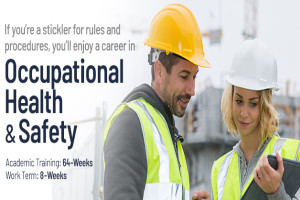Description
Date
1st Batch: 6th – 8th Feb, 2025
2nd Batch: 15th – 17th May, 2025
3rd Batch: 4th – 6th Aug, 2025
4th Batch: 27th – 29th Oct, 2025
Event Details
At the end of this course the participants will be able to:
- How to effectively manage health and safety
- How to identify and control common workplace hazards
- How to measure if you’ve been successful
- Relevant key international standards
- Investigate accidents and recommend preventative measures
- Explain human and organizational influences on health and safety
CONTENT:
Why We Should Manage Workplace Health and Safety
- Welcome introduction
- Introduction to health & safety / key terms
- The moral, financial, and legal reasons for managing health and safety in the workplace
- Explain how health and safety are regulated and the consequences of non-compliance
- Summarise the main health and safety duties of different groups of people at work
- Explain how contractors should be selected, monitored, and managed
How Health and Safety Management Systems Work and What They Look Like Defining ‘Volatility’ in the VUCA framework
- Safety management systems –What they are and the benefits they bring
- What does a good health and safety management system look like?
- Plan – do – check – act
- Responsibilities
- Practical arrangements
Managing Risk – Understanding People and Processes
- Health and safety culture
- Improving health and safety culture
- How human factors influence behavior positively or negatively
- Assessing risk
- Management of change
- Safe systems of work for general work activities
- Permit-to-work systems
- Emergency procedures
Health and Safety Monitoring and Measuring
- Active and reactive monitoring
- Investigating incidents
- Health and safety auditing
- Review of health and safety performance
Physical and Psychological Health
- Noise
- Vibration
- Radiation
- Mental ill-health
- Violence at work
- Substance abuse at work
Musculoskeletal Health
- Work-related upper limb disorders
- Manual handling
- Load-handling equipment
Chemical and Biological Agents
- Hazardous substances
- Assessment of health risks
- Occupational exposure limits
- Control measures
- Specific agents
General Workplace Issues
- Health, welfare and work environment
- Working at height
- Safe working in confined spaces
- Lone working
- Slips and trips
- Safe movement of people and vehicles in the workplace
- Work-related driving
Work Equipment
- General requirements
- Hand-held tools
- Machinery hazards
- Control measures for machinery
Fire
- Fire principles
- Preventing fire and fire spread
- Fire alarms and fire-fighting
- Fire evacuation
Electricity
- Hazards and risks
- Control measures
TRAINING METHODOLOGY
The training methodology combines lectures, discussions, group exercises and illustrations. Participants will gain both theoretical and practical knowledge of the topics. The emphasis is on the practical application of the topics and as a result participant will go back to the workplace with both the ability and the confidence to apply the techniques learned to their duties.





